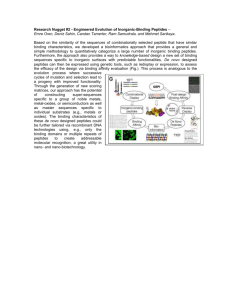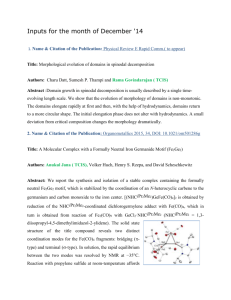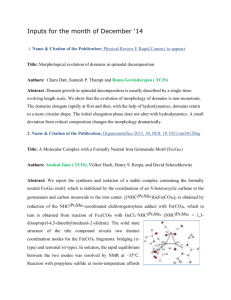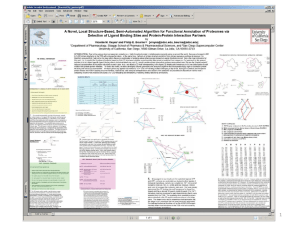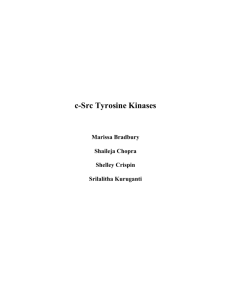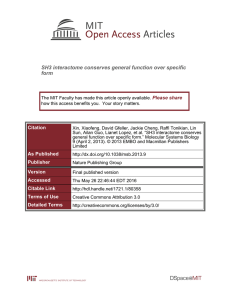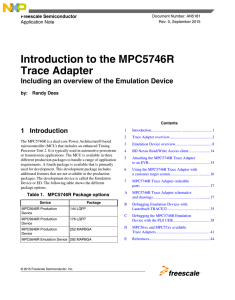Baylor_2005
advertisement
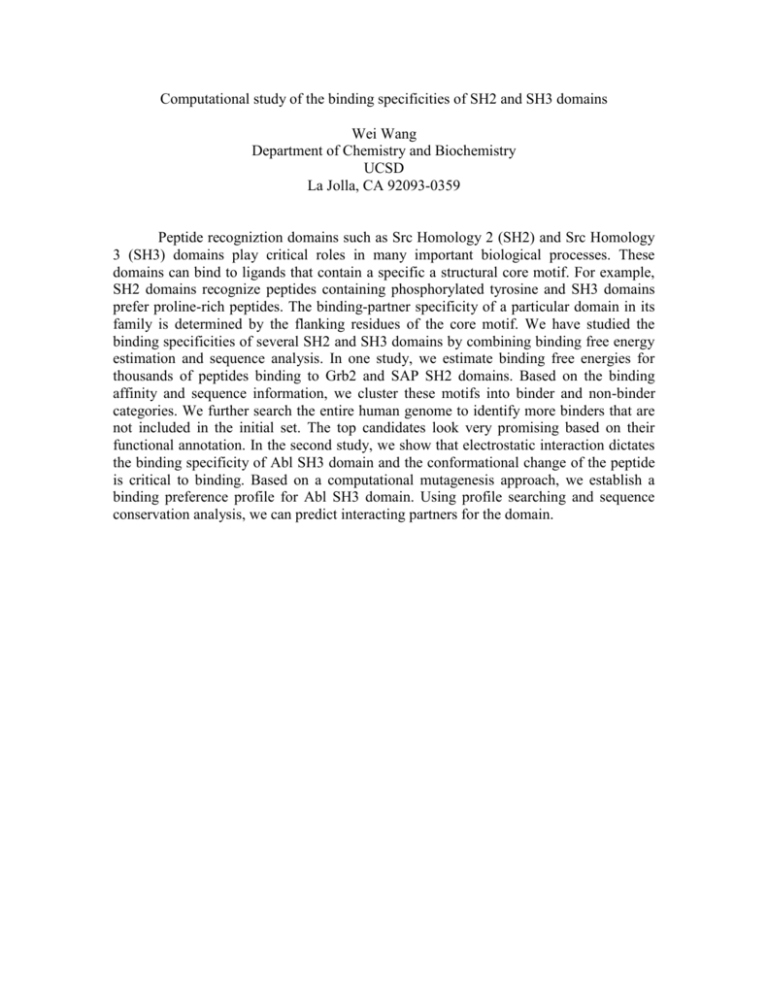
Computational study of the binding specificities of SH2 and SH3 domains Wei Wang Department of Chemistry and Biochemistry UCSD La Jolla, CA 92093-0359 Peptide recogniztion domains such as Src Homology 2 (SH2) and Src Homology 3 (SH3) domains play critical roles in many important biological processes. These domains can bind to ligands that contain a specific a structural core motif. For example, SH2 domains recognize peptides containing phosphorylated tyrosine and SH3 domains prefer proline-rich peptides. The binding-partner specificity of a particular domain in its family is determined by the flanking residues of the core motif. We have studied the binding specificities of several SH2 and SH3 domains by combining binding free energy estimation and sequence analysis. In one study, we estimate binding free energies for thousands of peptides binding to Grb2 and SAP SH2 domains. Based on the binding affinity and sequence information, we cluster these motifs into binder and non-binder categories. We further search the entire human genome to identify more binders that are not included in the initial set. The top candidates look very promising based on their functional annotation. In the second study, we show that electrostatic interaction dictates the binding specificity of Abl SH3 domain and the conformational change of the peptide is critical to binding. Based on a computational mutagenesis approach, we establish a binding preference profile for Abl SH3 domain. Using profile searching and sequence conservation analysis, we can predict interacting partners for the domain.
